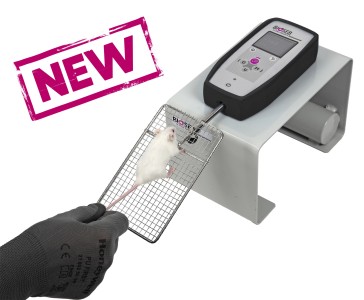Authors
J.J. Luszczki, L. Antkiewicz-Michaluk, S.J. Czuczwar.
Lab
Medical University, Department of Pathophysiology, and Institute of Agricultural Medicine, Department of Physiopathology, Lublin, Poland.
Journal
European Journal of Pharmacology
Abstract
The anticonvulsant activity of 1-methyl-1,2,3,4-tetrahydroisoquinoline (MeTHIQ — an endogenous parkinsonism-preventing substance) administered alone and in combination with four conventional antiepileptic drugs (carbamazepine, phenytoin, phenobarbital and valproate) was determined in the mouse maximal electroshock-induced seizure model. The types of interactions of MeTHIQ with the antiepileptic drugs were characterized using isobolographic analysis. The isobolographic analysis revealed that the combination of MeTHIQ with phenobarbital at the fixed-ratios of 1:3, 1:1 and 3:1 exerted supra-additive (synergistic) interaction in the maximal electroshock-induced seizure test. In contrast, the combinations of MeTHIQ with carbamazepine, phenytoin and valproate exerted additive interaction for all three fixed-ratios (1:3, 1:1 and 3:1) tested in the maximal electroshock-induced seizure test. In conclusion, MeTHIQ produces a clear-cut anticonvulsant effect in the maximal electroshock-induced seizure test in mice. The supra-additive interaction of MeTHIQ with phenobarbital against maximal electroshock-induced seizures makes their combination of pivotal importance from a clinical viewpoint.
BIOSEB Instruments Used
Grip strength test (BIO-GS3)
Source :
http://www.sciencedirect.com/science/article/pii/S0014299908012132

 Pain - Thermal Allodynia / Hyperalgesia
Pain - Thermal Allodynia / Hyperalgesia Pain - Spontaneous Pain - Postural Deficit
Pain - Spontaneous Pain - Postural Deficit Pain - Mechanical Allodynia / Hyperalgesia
Pain - Mechanical Allodynia / Hyperalgesia Learning/Memory - Attention - Addiction
Learning/Memory - Attention - Addiction Physiology & Respiratory Research
Physiology & Respiratory Research











![Dynamic Weight Bearing 2.0 – Postural Module [Add-on]](https://bioseb.com/733-home_default/dynamic-weight-bearing-20-add-on-postural-module.jpg)
























 Pain
Pain Central Nervous System (CNS)
Central Nervous System (CNS) Neurodegeneration
Neurodegeneration Sensory system
Sensory system Motor control
Motor control Mood Disorders
Mood Disorders Other disorders
Other disorders Muscular system
Muscular system Joints
Joints Metabolism
Metabolism Cross-disciplinary subjects
Cross-disciplinary subjects CONFERENCES & MEETINGS
CONFERENCES & MEETINGS 